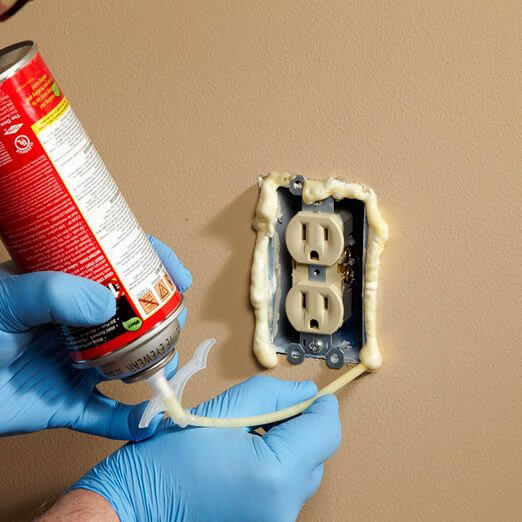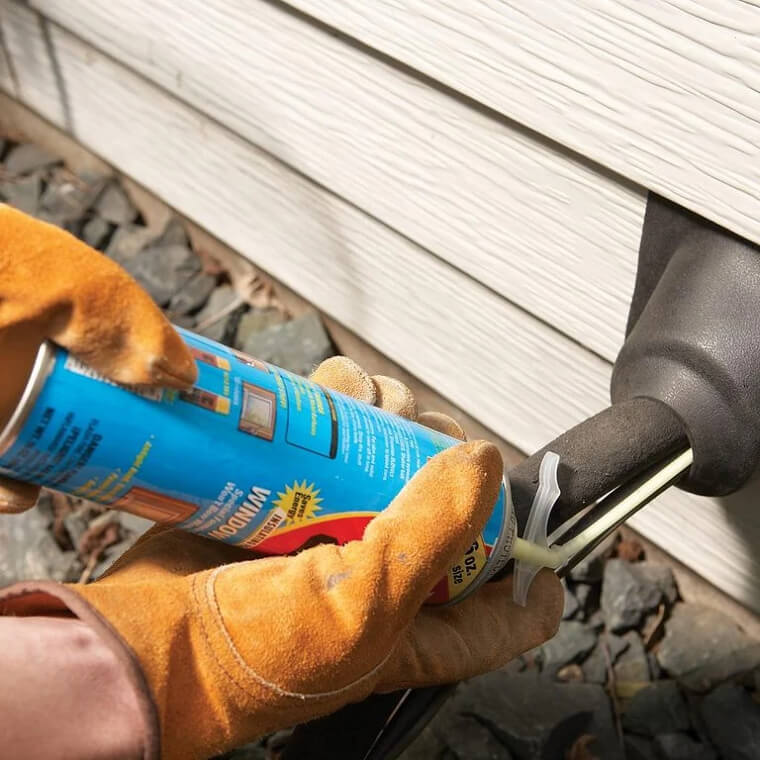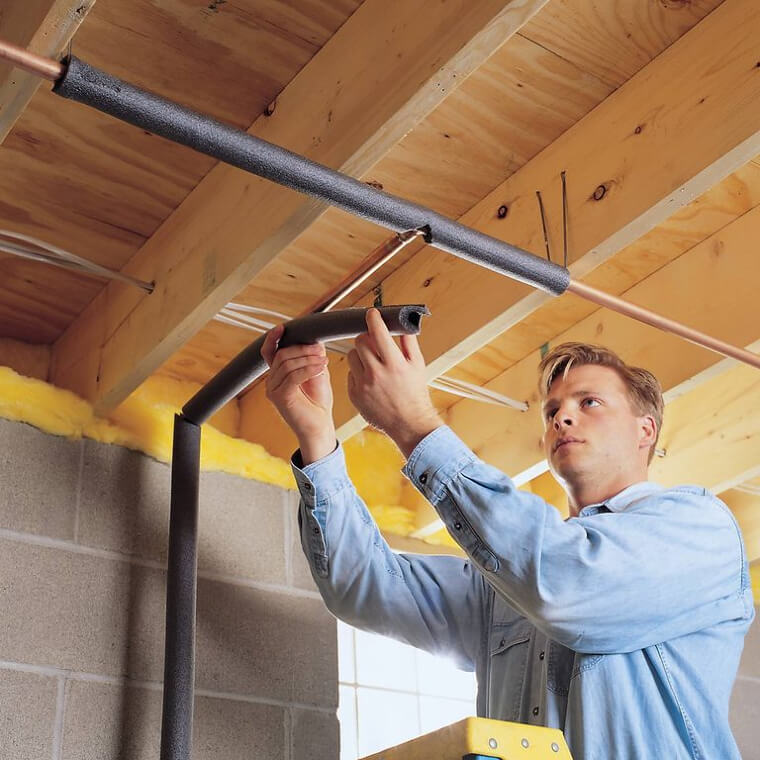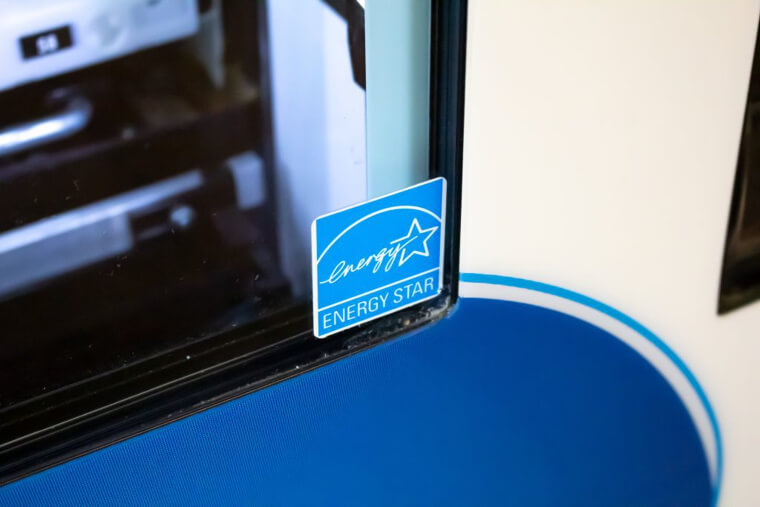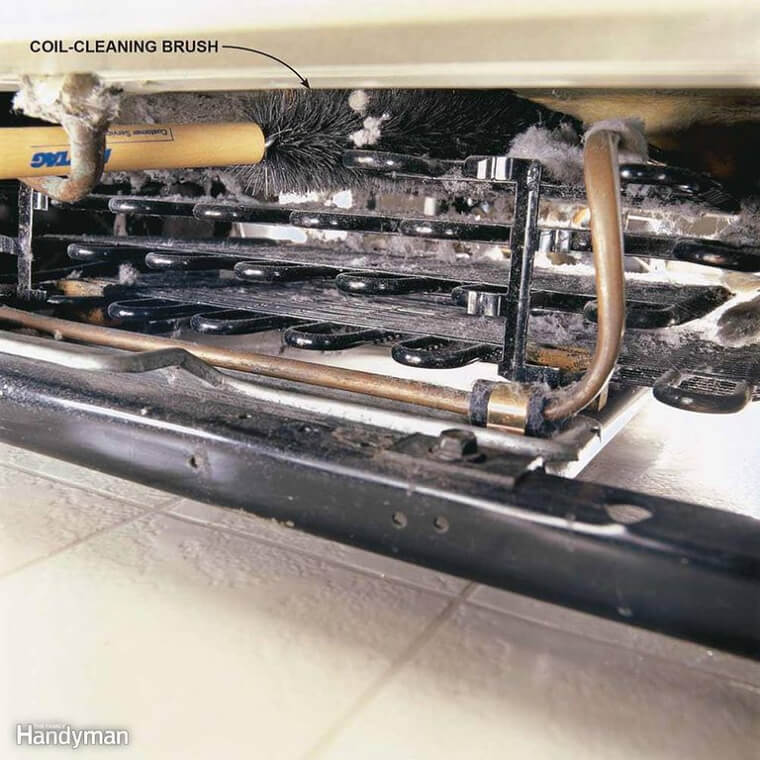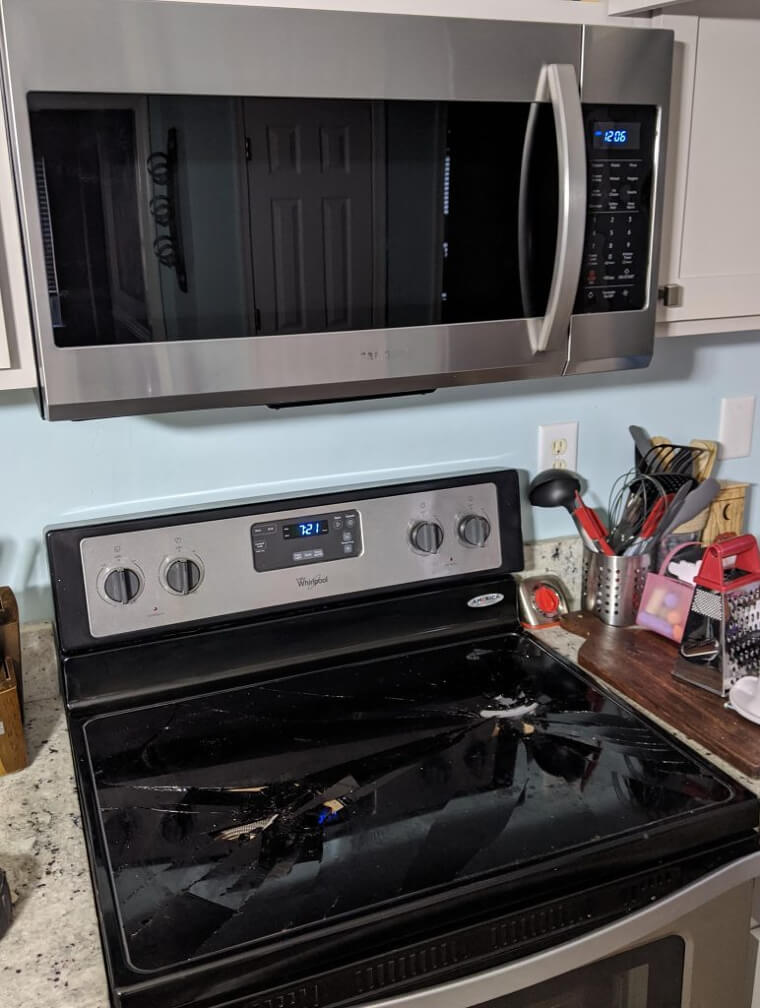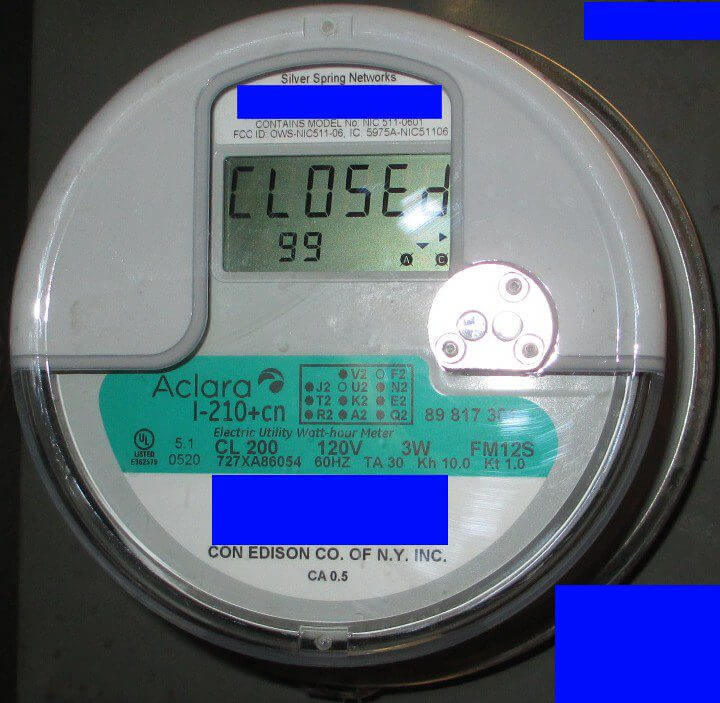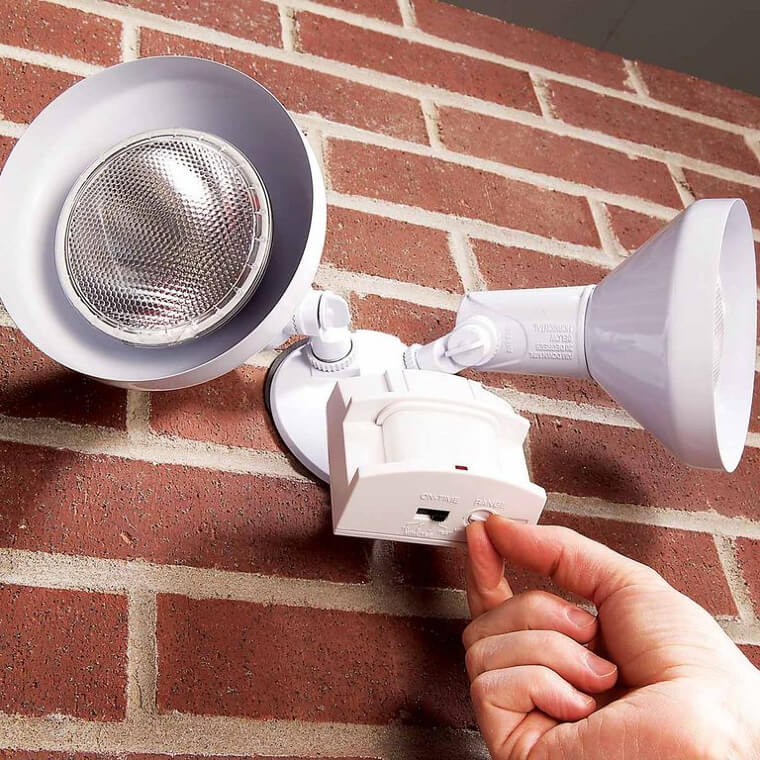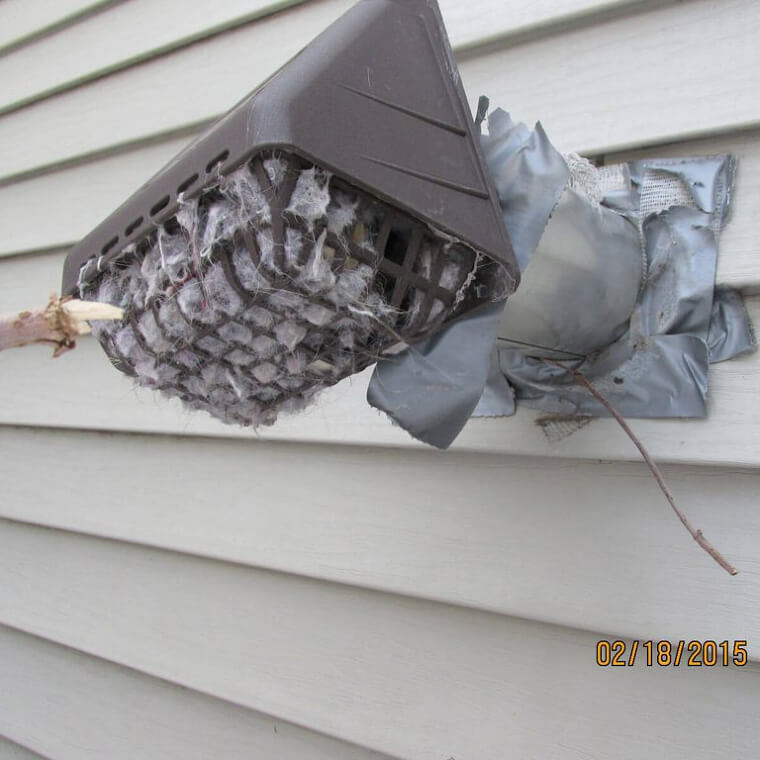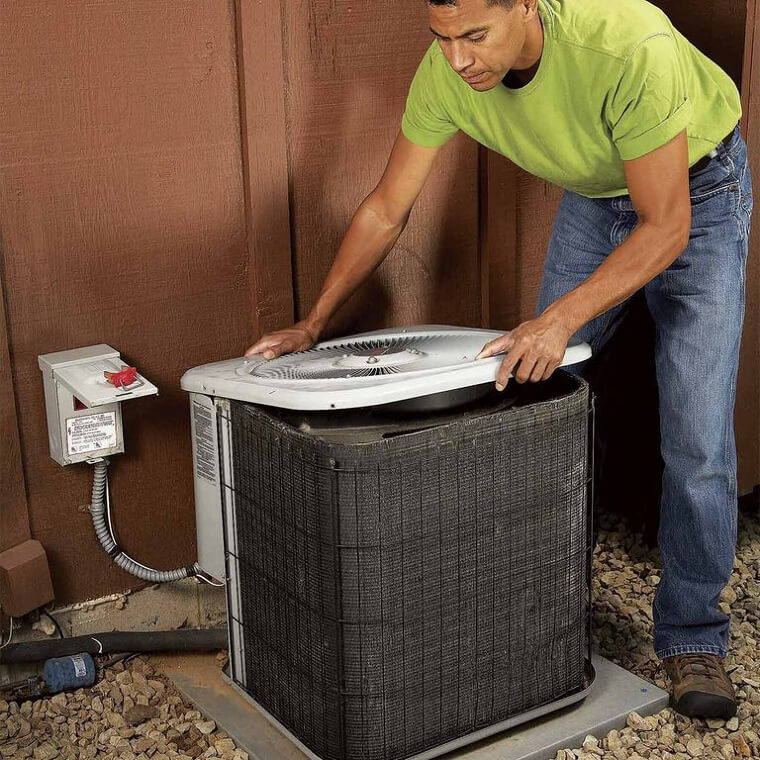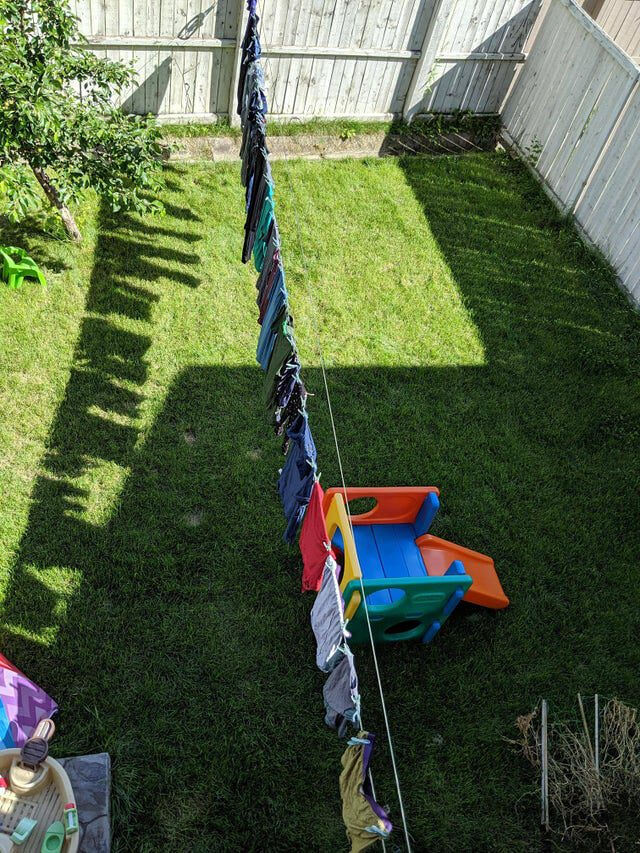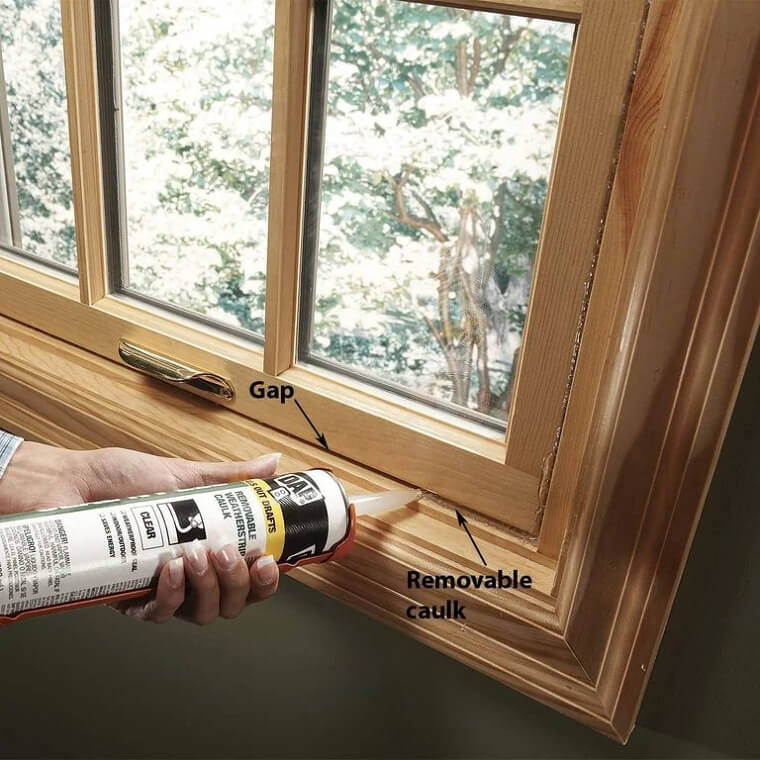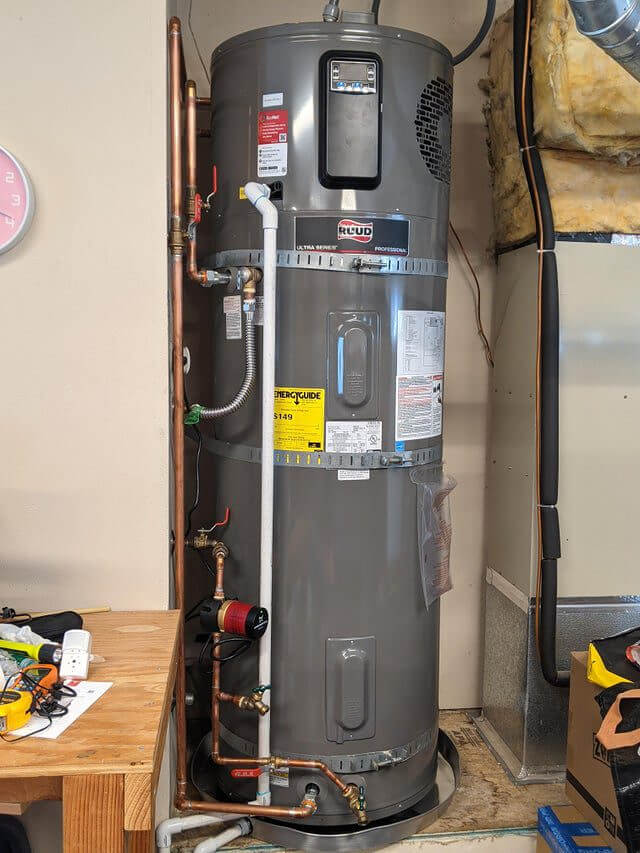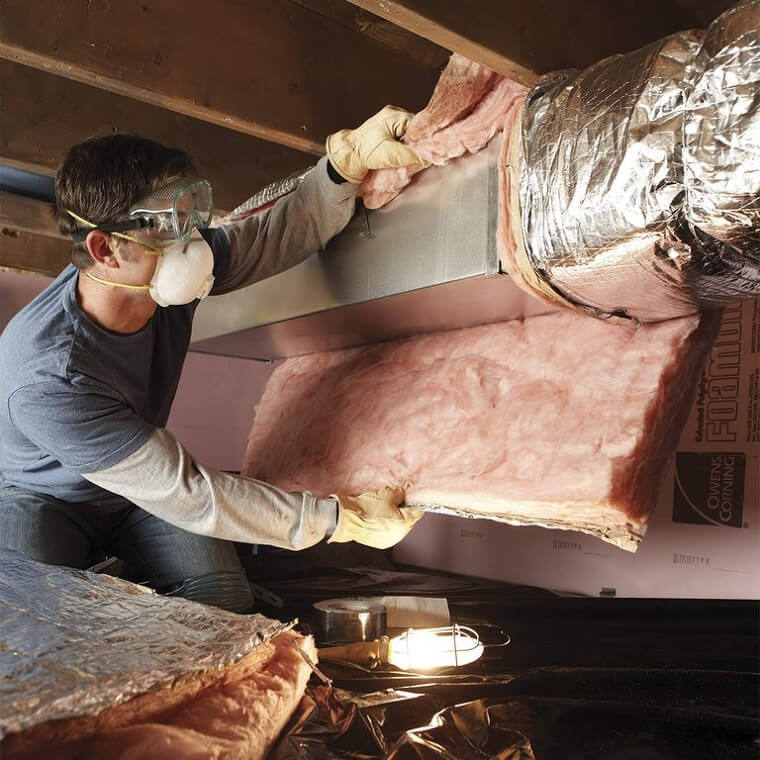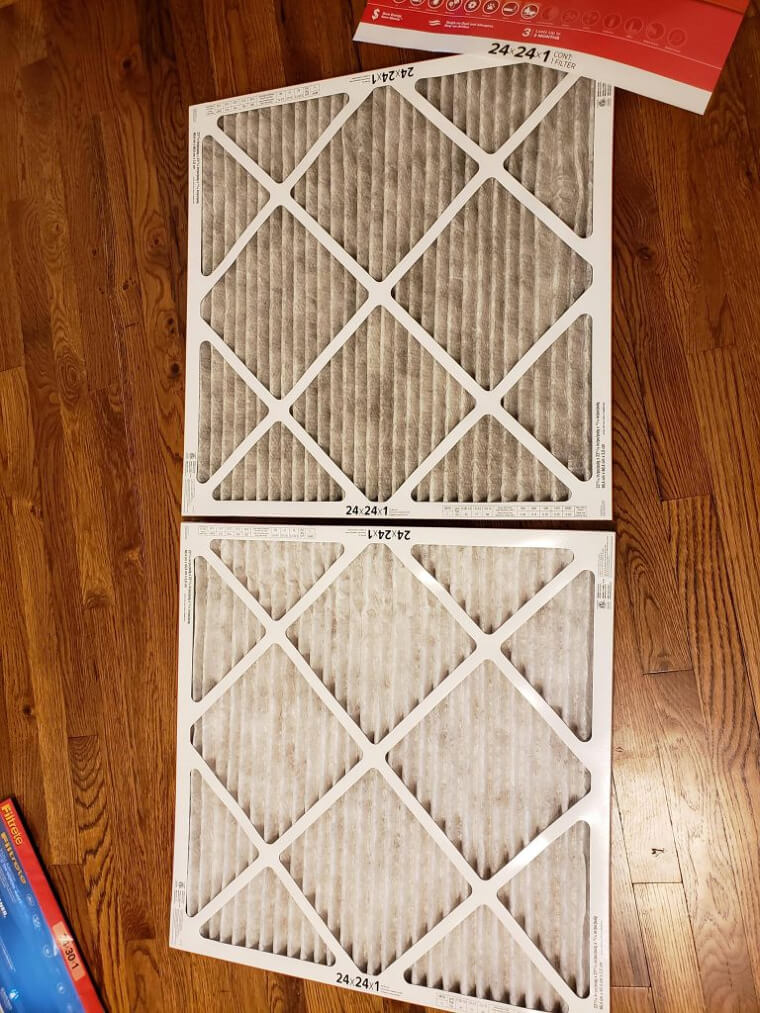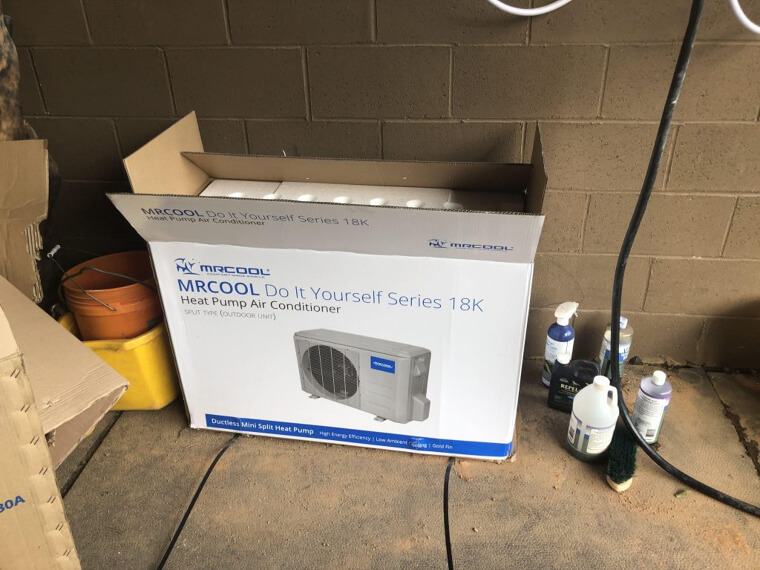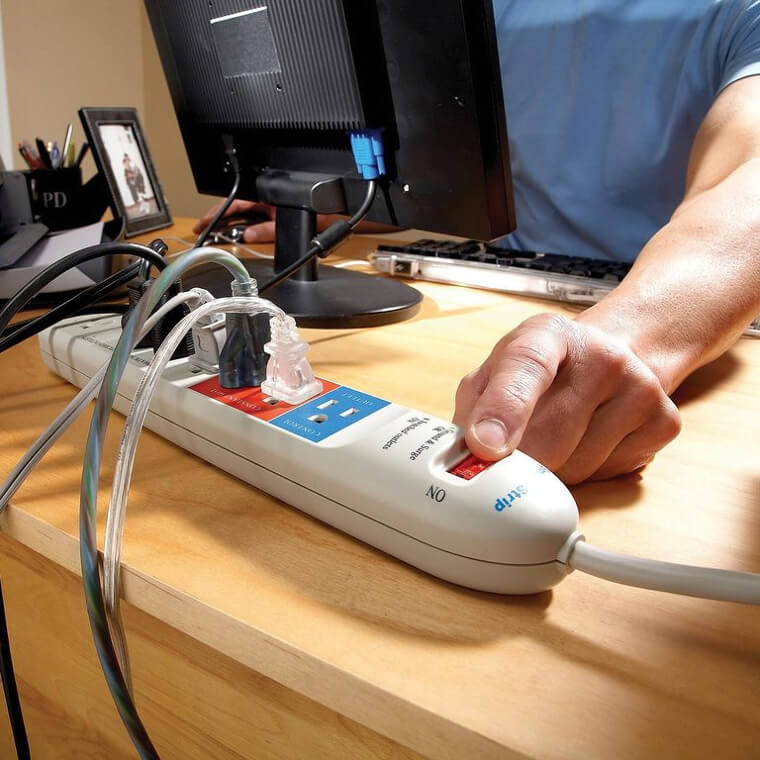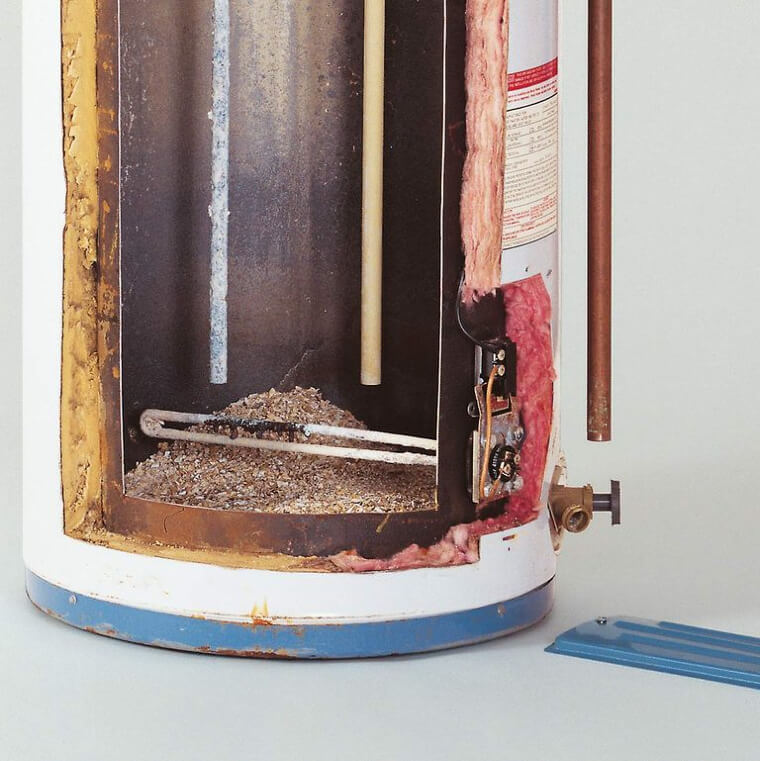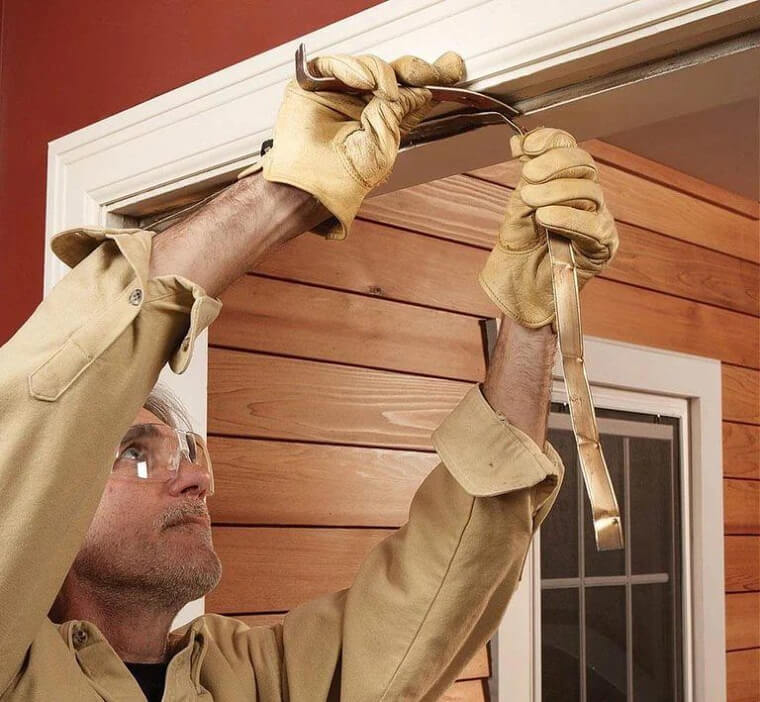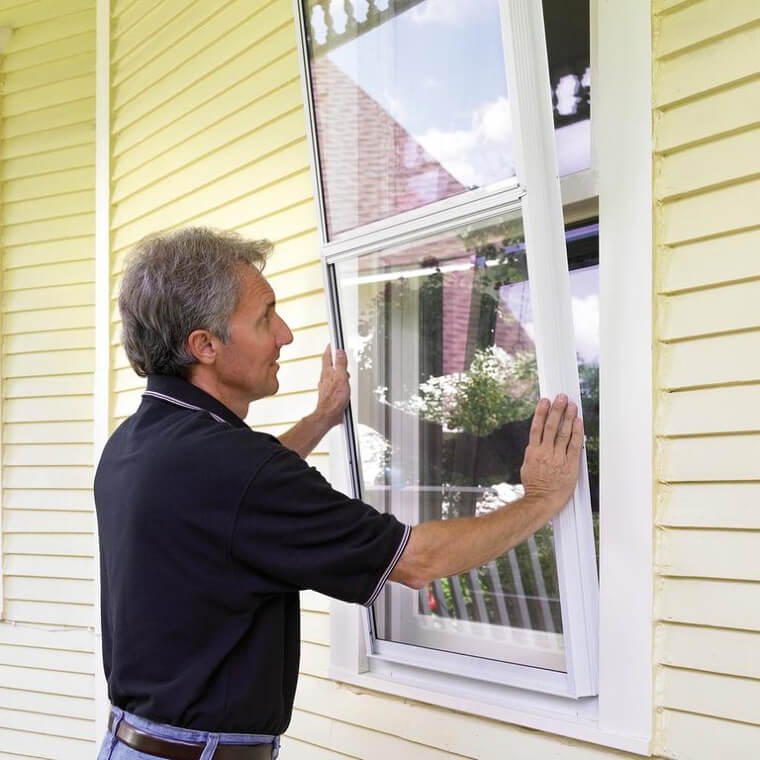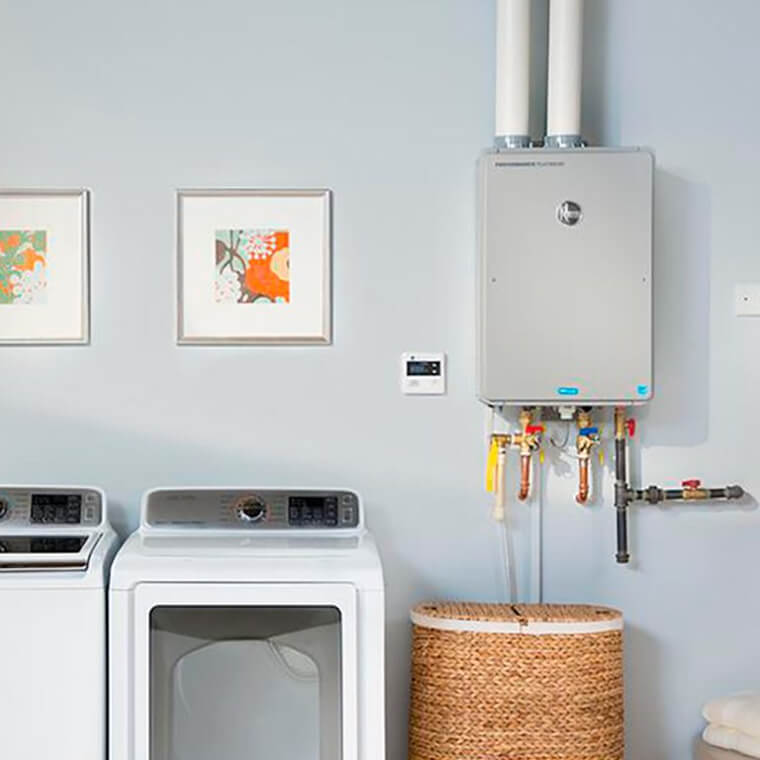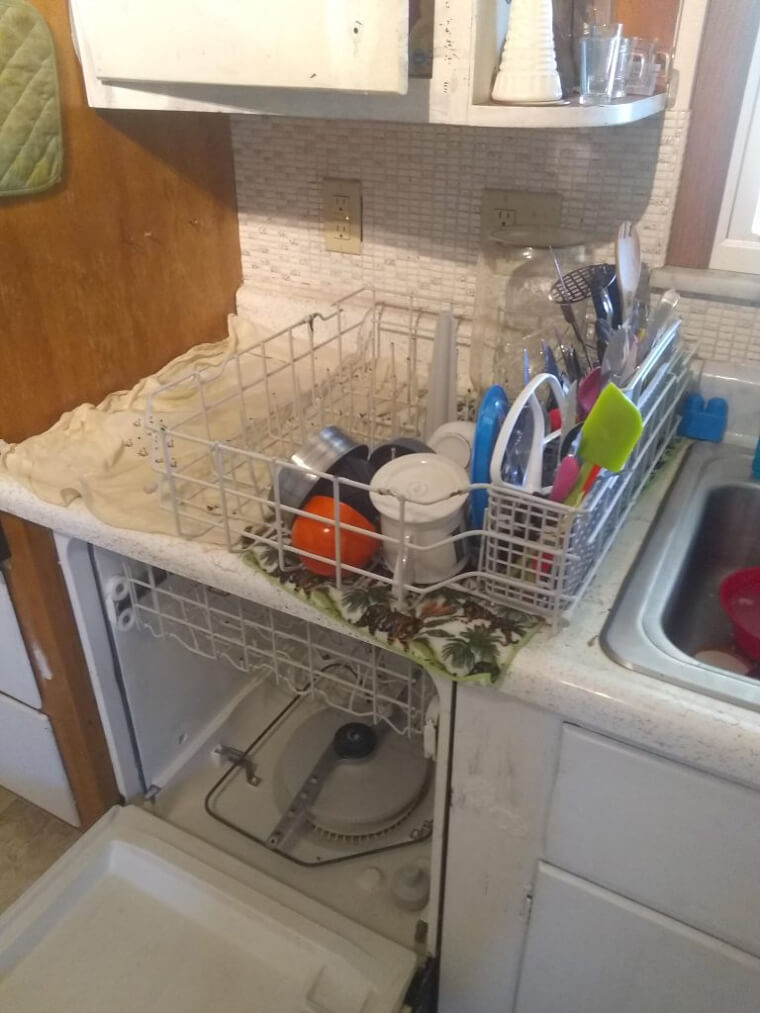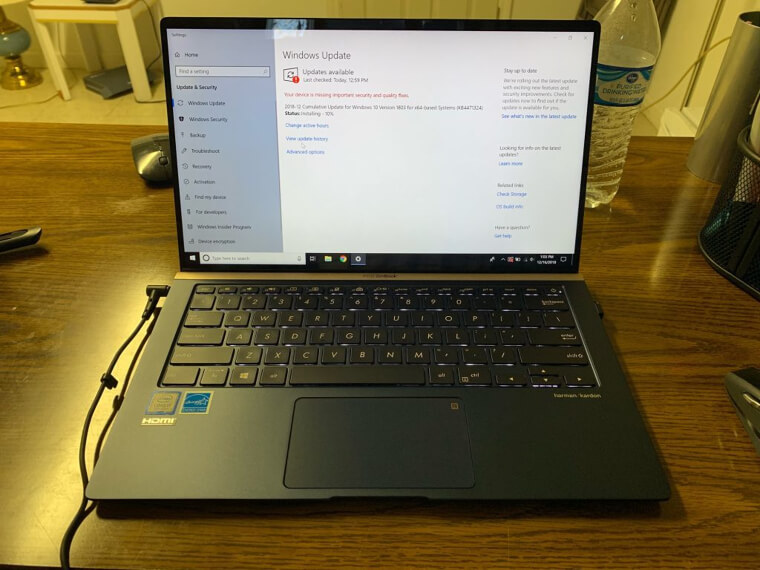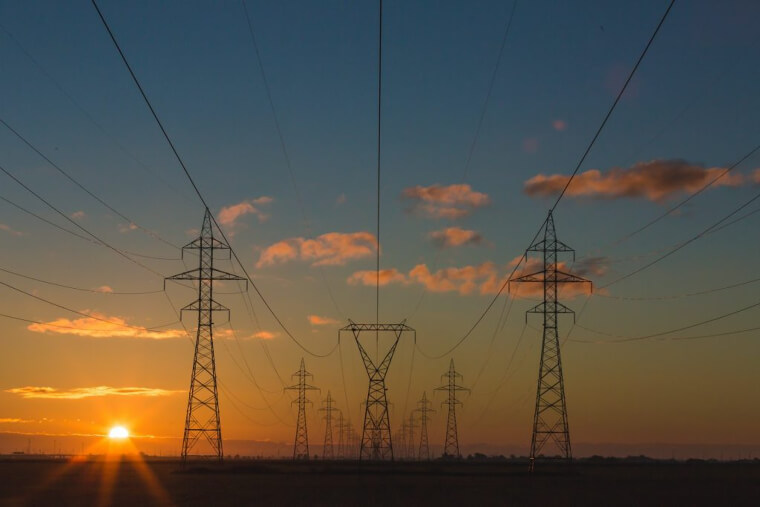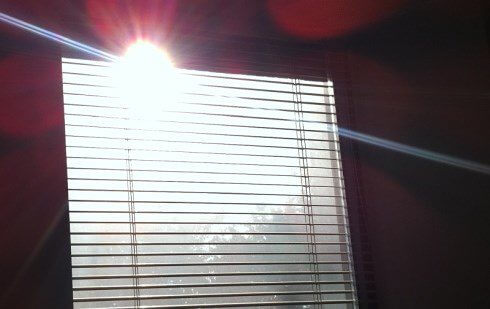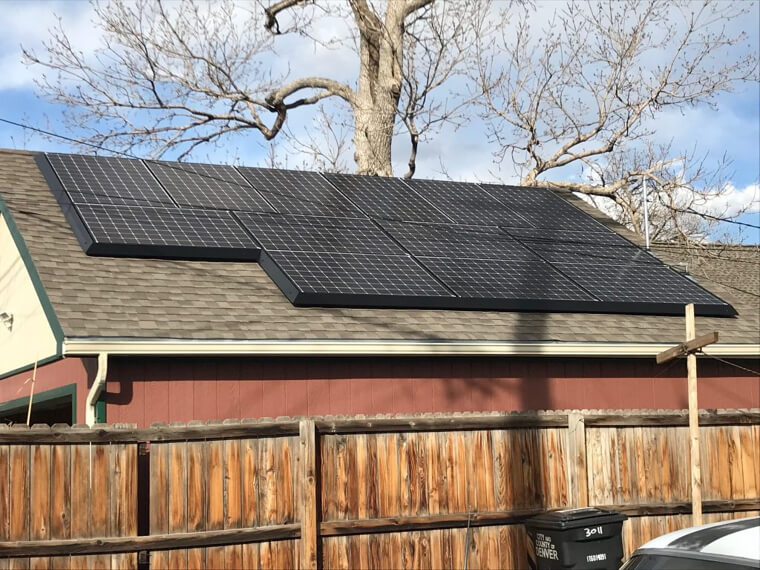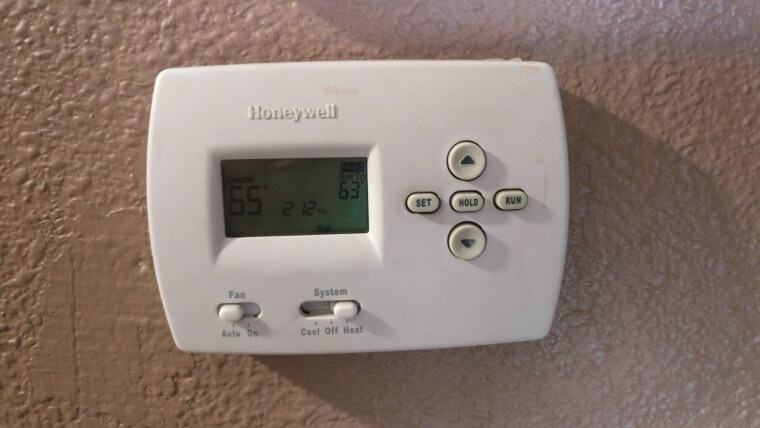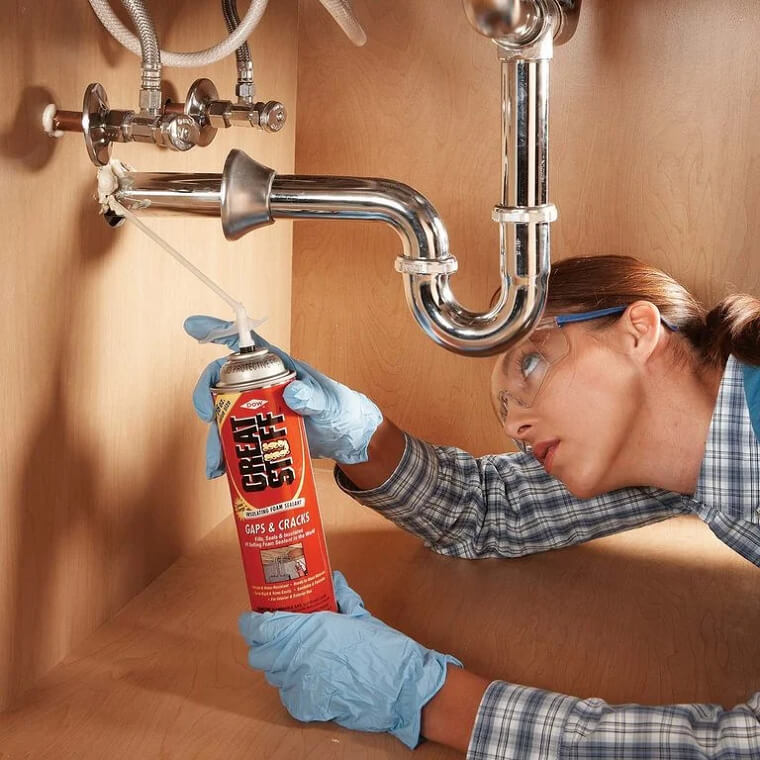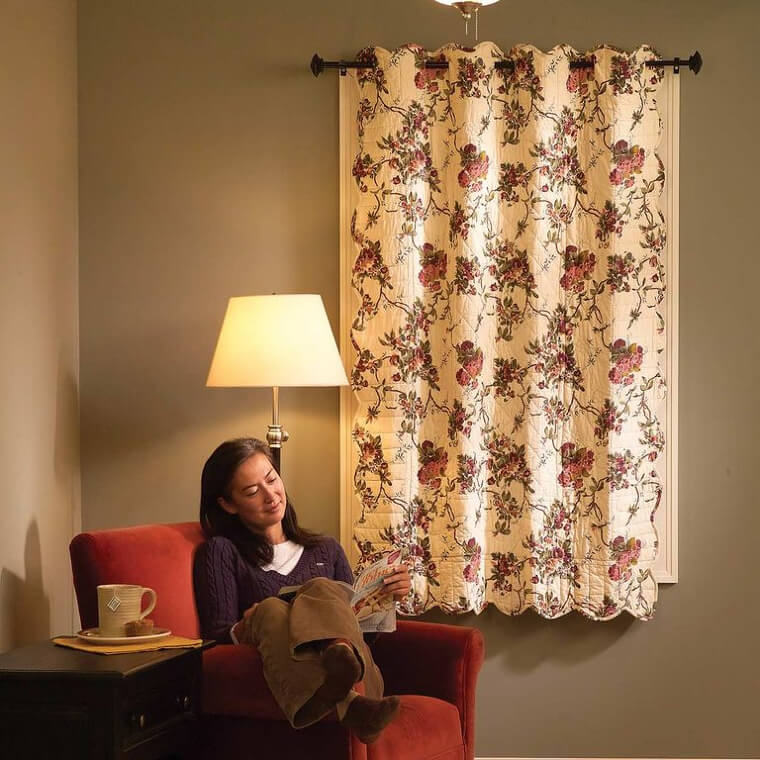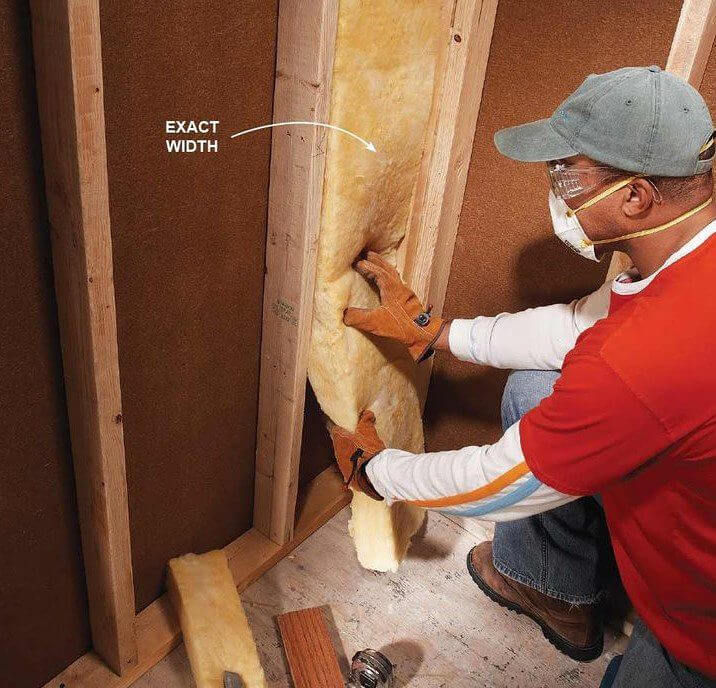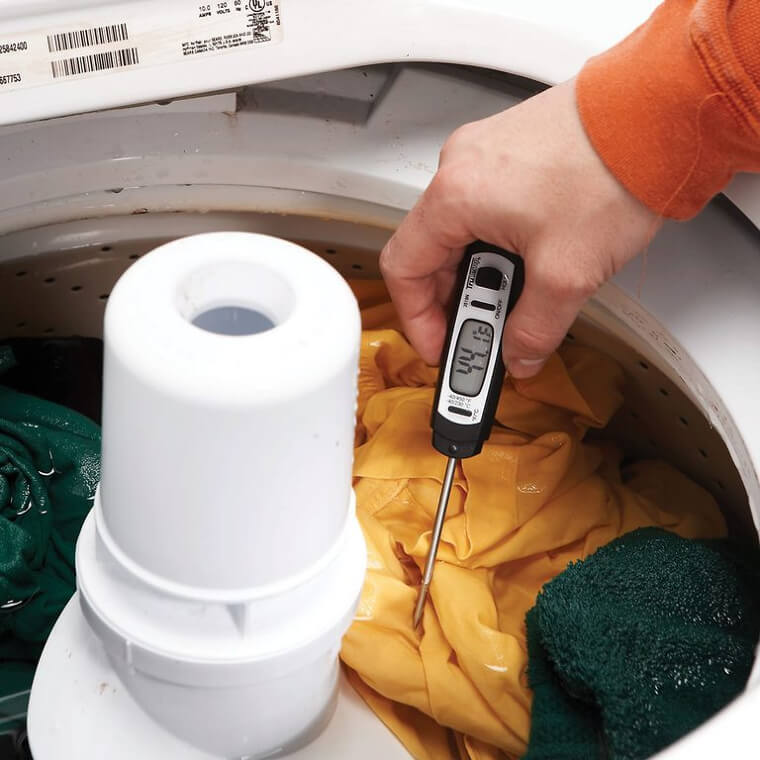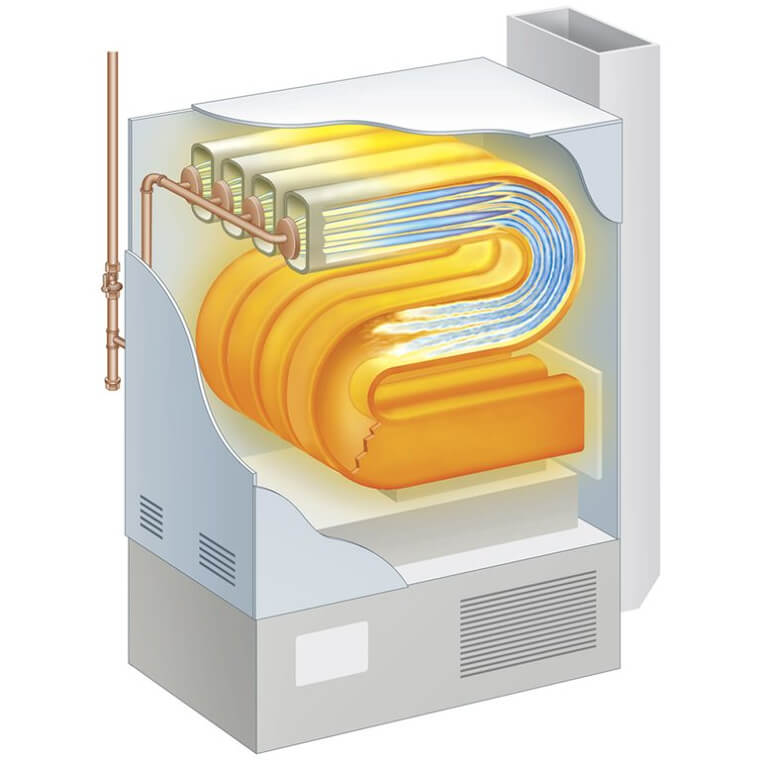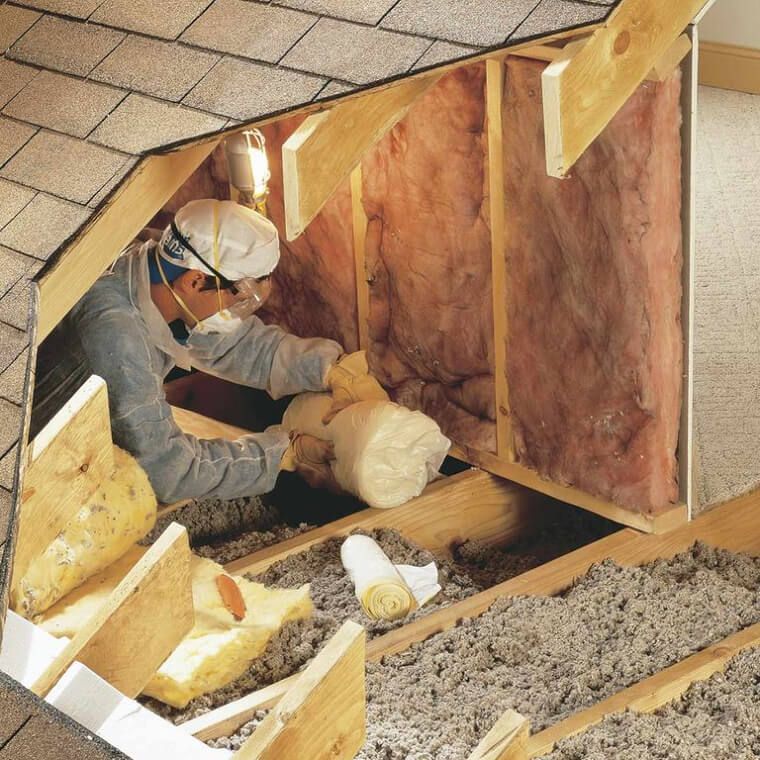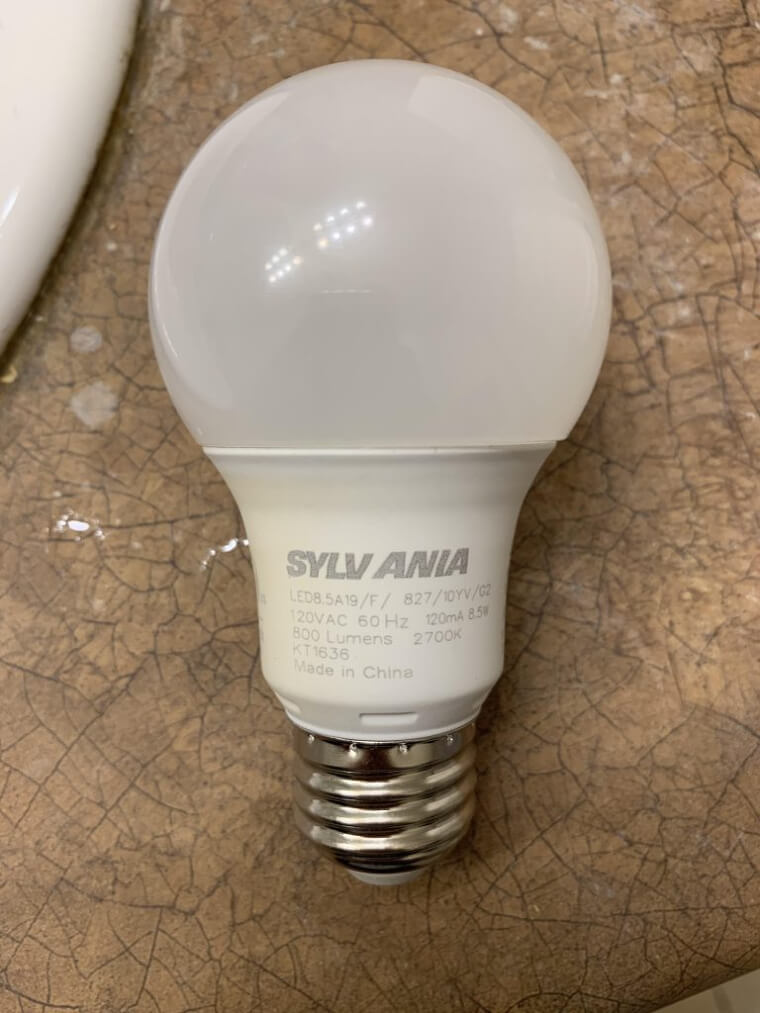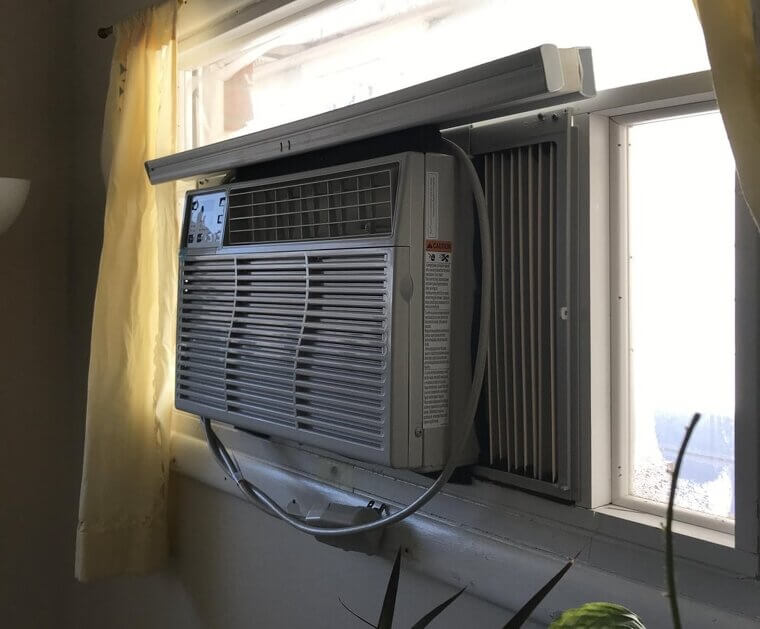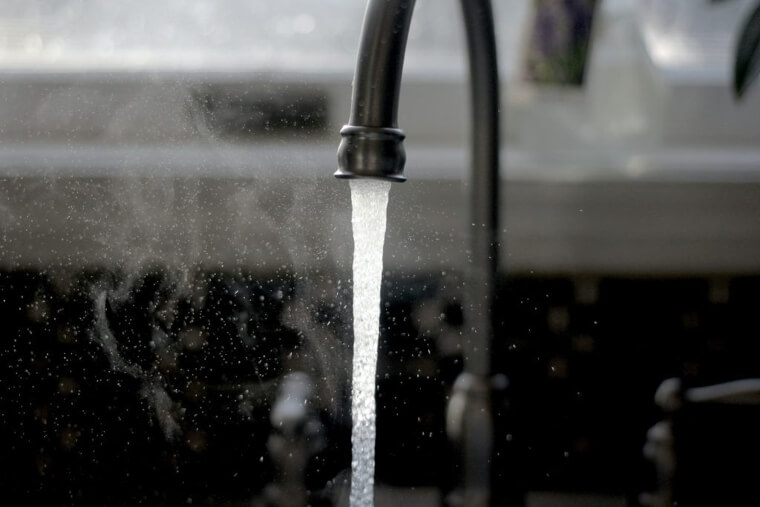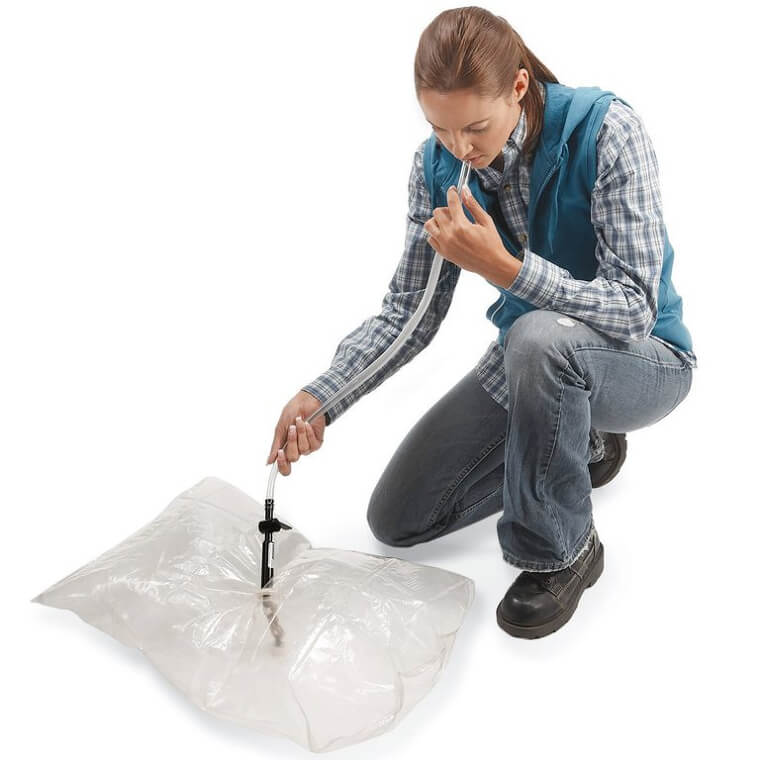Seal Around Electrical Sockets
The gaps around most electrical sockets and switches might seem small, but they're still letting cool and warm air out of your home and costing you more on heating and cooling. So, you might want to consider sealing them up with a sealant. However, be careful about what kind of sealant you buy, as you still want your sockets to look orderly. Things like foam may not be the best choice.
If you're in doubt, then you can check online for tips on what's best to use. There are plenty of tutorials that walk you through step-by-step, and the whole process is really simple.
Inspect And Seal Outside Holes
Some people never think about this, but if you live in a house, then your home probably has holes on the outside that could be sealed up. These types of holes usually allow for pipes and appliance hoses to run outside, but they're often much bigger than they need to be. When they are, they're prone to letting air escape from inside your home and driving up heating and cooling costs.
They also sometimes allow bugs and mice to get inside your home, so better to seal them up as soon as possible with a store-bought sealer or foam.
Insulate Your Pipes
This one will only net you small gains when it comes to saving money, but it's still worth doing if you care about hot water. You can buy pipe sleeves at most hardware stores and then use them to cover any water pipes you have in your home. Doing so will ensure that your pipes retain as much heat as possible when there is hot water moving through them.
It'll save you a little bit of money, but more so than that, it'll help make sure that the warm water keeps flowing for as long as possible before running out.
Invest In Energy Star Appliances
Odds are you've seen these blue stickers before, whether on your own appliances or at a store. These are Energy Star stickers, and they certify that an appliance meets its energy requirements by using much less energy than traditional appliances. They claim that people have collectively saved around $30 million on energy bills since the program was introduced. You're unlikely to save that much, but if you switch most of your appliances out, you could save up to 30% on your own energy bills.
And if you live in the U.S., you might be eligible for tax deductions if you meet certain requirements when switching to Energy Star products depending on where you live.
Measure Your Energy Usage
Most of the time, the best way to cut down on something is to analyze it, whether that be spending or energy usage. So, it might be worthwhile to analyze the energy usage of your home in order to get a better picture of what you're actually paying for and where all your money is going. Doing so can help you figure out if you're paying more for heating and cooling or for things like appliances.
After you figure that out, you can begin tackling your energy usage in a more specific manner, but it may require that you invest in some smart infrastructure for your home, such as a new thermostat.
Clean Refrigerator Coils
The refrigerator coils on the back of your fridge are there to help vent and displace heat, but most of us probably never give them a second thought. That usually means that they accumulate dust and dirt, which keeps them from doing their job properly. So, one way to cut down on cooling costs is to dust down the coils on the back of your refrigerator to help it run better.
This will keep the compressor from having to work as hard, and it also might extend the life of your refrigerator. Oh, and it'll also reduce the amount of electricity your fridge uses.
Try Using Your Microwave More
If you're one of those people who hate using microwaves, then this tip might not be for you. However, cutting down on using a stove and instead switching to a microwave is a good way to slash energy bills, whether your stove is gas or electric. The reason for this is simple. Microwaves take much less time to heat up foods and are also much smaller than stoves.
Let's say that a stove or oven takes around 20-30 minutes to heat up food. You could probably cut that number down to around 1 minute by using a microwave, which is a lot less power being drawn.
Make Sure To Close Your Fireplace
Fireplaces might seem like energy savers, and they can be. But you should remember to close your fireplace when you're not using it. If it stays open all of the time, then you just have one giant air vent in the middle of your home, letting all of your warm air seep out. Most fireplaces have gates, but if yours doesn't, then it might be time to invest in one.
You want to make sure that the gate closes pretty securely, as well, so that you can cut down on as much air escaping as possible when you're not using your fireplace.
Look Into Smart Meters
Energy technology really has come a long way. You can now purchase smart meters for your home that help track your energy usage and, in turn, help you control it. But that's not all they do. They also keep tabs on the entire energy grid and will automatically turn off your largest appliances if they detect that the grid is about to fail. That means that they can actually reduce blackouts.
Depending on where you live, your energy provider might also pay you to have one installed or offer you rebates. So, there really isn't a reason not to look into getting a smart meter.
Smart Switches Can (Usually) Save You Some Money
This one might be worth it for some people but not for others. If you're like us and often forget to turn out the lights, it might be time to invest in some smart switches and lights. With these, you can turn off any light in your house remotely or use motion sensors that only turn on when someone is around. However, there might be a downside for some.
Sometimes motion sensors can be a bit finicky and turn on at the slightest movement. They'll usually turn back off, but sometimes there's really no need for them to switch on in the first place.
Clean Lint From Dryer Ducts
If you're not already cleaning the lint from your dryer ducts, then now might be the time to start. Doing so can help prevent a fire from breaking out in your home since lint is highly flammable. But it'll also help your dryer run more efficiently and, in turn, cut down on your energy costs. You can find the duct to most dryers outside your home, directly behind where your dryer sits inside.
From there, it only takes a second or two to clean out all of the lint. You might also want to consider sealing around the duct if there is any open space there.
Maintain Your A/C Unit
The largest energy consumers in most people's homes are their heating and cooling systems. And if one of these isn't running at peak efficiency, then it can cause your energy bill to be a lot more expensive than it'd normally be. In general, you want to service your A/C unit about once a year to make sure that it stays running smoothly. You can do this yourself, or you can get someone to come and look at it, neither should be too expensive.
A/C units are generally pretty simple to service, and unless there is something major wrong with your unit, there are usually only a couple of steps required to make sure it's running well.
Dry Your Clothes On Lines
As a rule of thumb, heating usually costs more than cooling, and that goes for clothes, too. Running them through your dryer can also run up your energy bill. So, why not just hang them on a clothesline instead? It's pretty much free, and it's only a little bit more work than using a dryer after you get the line set up. Plus, it'll make your clothes smell like the outdoors.
We're not saying that you have to get rid of your dryer completely, but even only hanging every other load could make a dent in your monthly energy bills.
Inspect And Seal Windows
Windows are notoriously terrible for keeping in warm or cool air. And while manufacturers have gotten better at building more energy-friendly windows over the years, it's still worth inspecting the windows inside your home to see if they're a drain on your heating and cooling. To do so, just feel around your window sill to see if you can detect any cold air coming through. If you can, then it might be time to break out the caulk gun.
Luckily, it's pretty simple to seal around your window, and all you usually need is a caulk gun and some caulk or another type of sealant. After you're done, feel around again to make sure it's completely sealed.
Set Up A Timer For Your Water Heater
Water heaters take a lot of energy to power, and doing something as simple as setting up a timer for your heater can save a load of electricity and money. The best part is that you can buy a timer separately, and they're usually pretty cheap. Just set the timer to kick on before you usually use your heater to ensure that you'll have hot water and you're good to go.
You'll probably be surprised at how much money you end up saving. You could also just turn off your heater after you finish using it, but we all forget from time to time.
Insulate Air Ducts
If you have a central heating system in your home and your air ducts aren't insulated, then you might be losing up to 30% of your warm air. That's a huge percentage, and it translates to much higher energy bills. So, it's worth making sure that your air ducts are insulated, and that heated air isn't being lost as it's traveling through the ducts and into whatever room it's supposed to be getting to.
Insulating your air ducts is also a fairly simple project, and insulation can be bought at most hardware stores for fairly cheap prices. It just might be a bit time-consuming considering you're going to have to crawl around in the attic.
Remember To Change Your Furnace Filters
Regularly changing your furnace's filters is one of the easiest things you can do to ensure it keeps running efficiently. Of course, should fully service your furnace at least once a year, but simply changing its filters can also go a long way. Filters need to be changed about once a month in the winter when furnaces usually get the most use. This will help your furnace use less power than it normally would.
It'll also help extend your furnace's lifespan, which is really important considering how expensive it can be to replace. Filters can be picked up at most hardware stores if you live in an area with cold winters.
Consider A Mini-Split System
This one might not be right for everybody, but for many, it might be worth considering investing in a mini-split HVAC system. These little systems don't require ducting, and they can cut cooling costs by as much as 30% percent. However, they do sometimes require a pretty sizable upfront investment. Still, they're easy to install compared to traditional A/C units and can save you a ton of money in the long run.
You can also cool or heat around four rooms with most mini splits, meaning this might be perfect for most people. They're also a better choice than window units as they cool and heat up to 40% more efficiently.
Cut Down On Costs With Power Strips
This next statistic is pretty surprising, but some estimates say that most appliances in your home use 75% of their energy when they're not even in use. In other words, all of those appliances that are plugged in but not in use at the moment, such as your T.V. use most of their energy when you're not using them. To combat this, try plugging al of them into a power strip.
Don't overload a single strip, but do install a lot of them around your home, and make sure to turn them off when you don't need an appliance like a lamp or T.V.
Drain Your Water Heater Regularly
Water heaters can be pretty expensive to run compared to most other household appliances, so you want to ensure that they're already performing as efficiently as possible. This is why it's recommended that you drain your water heater at least once a year. If you don't, then sediment can build up inside and cause your heater to exert much more energy to heat water. This is because it has to heat this sediment before it heats the water.
If there is any appliance in your home you want running at peak performance, it's your water heater so remember to give it a good drain about once a year.
Use Weather Strips On Doors
Weather strips are adhesives that are pretty easy to install and help keep cool or warm air from escaping out the cracks between your door and the doorframe. Not every door in your house might need weather strips, though, and you can check by using a flashlight. If you can shine the light and see it through the cracks from the other side, then there's some cool or warm air getting through there.
Weather strips can be bought at most hardware stores, and since they usually use adhesive to stick to doorframes, they're really easy to install. They're also especially useful if you're trying to heat or cool an area of your home with a window unit.
Consider Installing Storm Windows
Windows are one of the main areas of concern when it comes to air escaping out of your home. That's why it might be worth considering investing in some storm windows. These are basically more durable windows that go over your existing windows. And while they're meant to protect your home and windows from storms, they can also help you save money on your energy bill by keeping air from escaping.
They even sell special storm windows designed to do just that. However, they might be somewhat of an investment upfront, but they should still save you some money in the long run.
Install An Instant Water Heater
Instant water heaters do pretty much what the name implies; they heat water nearly instantly. Most homes come with a large water heater that sucks up a lot of energy. They have to in order to heat all of the water in the tank. But an instant water heater doesn't even have a tank. Instead, it works by heating water only when you turn on something like a faucet.
Some estimates say that instant water heaters can save as much as 50% when compared to traditional water heaters, but they do require a bit of money upfront to buy.
Air Dry Dishes
Dishwashers are great and can help save a lot of time. However, they can also use a lot of power, especially when it comes to drying dishes. Luckily, you can save some money by skipping this process. We're not saying you have to forgo using your dishwasher entirely, but you can just let your dishes air dry if you stop your dishwasher right before its drying cycle kicks in.
This should save you some money by cutting out the most energy-intensive part of the dishwashing process. You could also just switch to washing and drying by hand to cut down on using even more energy.
Use A Laptop Instead Of A Desktop
Depending on the type of work you do, this one may or may not be possible. But switching from using a desktop to a laptop while at home can help cut down on electricity costs. This is because a desktop generally uses a lot more energy than a laptop. The latter is built to be energy efficient since it has to last so many hours on a single charge as opposed to a desktop that's meant to stay plugged in.
But again, if your work requires a lot of computing power, then you might not have a choice in the matter and you may be forced to stick with using a desktop.
Compare And Contrast Energy Providers
It's always worth checking out some other energy providers in your area if you're concerned that you're paying too much for electricity. However, if you live in some parts of the U.S., then this might not be an option. For example, the southeastern part of the U.S. really only has one option when it comes to energy providers. But some other parts should have multiple, and you can easily compare prices to see who offers the best deals.
It might also be worth checking out what kind of deals and rebates energy providers and local governments offer many will pay for you to install eco-friendly energy devices in your home.
Let The Sun Do All Of The Work
During the early and late months of winter, it might just be a better idea to open up your blinds than to reach for the heater. This is usually when the sun is shining bright enough to heat up your home so long as you don't open up your windows. Doing so will keep you from using the heater for a bit and, in turn, save you some money at the end of the month.
Of course, this solution only works so long as it's reasonably sunny outside, but it can still help you cut down on heating costs more days than not.
Install Some Solar Panels
Solar panels used to be relatively expensive, but they've dropped massively in price over the years. You can now install solar panels on your home for relatively cheap. In some cases, this can get you off the grid entirely. In others, it can drastically cut down on your energy usage. Either way, it's worth looking into whether or not solar panels are a good option for you and your home.
Some energy companies will even pay you small amounts for using solar panels, as any electricity they generate and put back into the grid is like you selling the power company electricity.
Lower Your Water Heater's Temperature
There are plenty of ways you can cut costs by altering or servicing your water heater. One such way involves lowering the temperature of your water heater. They are usually set up to heat water to temperatures you're never really going to need, and reducing that temperature can go a long way in saving some money. If you're curious, then most recommend setting your heater's temperature to around 112 degrees Fahrenheit or 45 degrees Celsius.
It really all just depends on your personal preference, though, and what you think you can get by with as long as it's not set to pump out scolding hot water.
Turn Down Your Thermostat
This one might seem like a no-brainer, but you'd be surprised by just how much you can save by lowering the temperature on your thermostat. You can use a space heater in the colder months to heat whatever room you're in, but the more you turn down the thermostat, the more you're going to save. Some government agencies estimate that you save around a percent for each degree you turn down.
That's actually pretty incredible, and it's a lot of money, especially if you can resist using the thermostat at all during the winter months and just use a space heater.
Fill The Holes Inside Your Home
Another source of energy costs can come from the holes inside your home. These gaps often allow for warm or cool air to escape or for pests to get in. And you can usually find them in places like cabinets under your sinks or in and around your kitchen and bathroom. You can use just about any type of sealant you want to fill these holes, and the process is pretty quick.
If you have a basement or attic, you might also want to check in there as these two places often contain a lot of pipes and vents that reach to the outside.
Turn To Winter Curtains
Sometimes it just might be too expensive to do something like install storm windows on your home, or maybe you're just looking for a really simple solution to keep air from escaping through your windows. If either of those is the case, then you can always try and put up winter curtains inside your home. These curtains are thick and quilted, which means they should keep a lot of warm air from escaping through your windows.
They're not going to stop all of the air, but they are a pretty cheap solution that doesn't require much money upfront. It's also as easy as changing the curtains because that's basically all it is.
Make Sure That Your Walls Are Insulated
If you live in the U.S., then odds are that your walls are insulated. However, if you live in an old home or if you just live outside the U.S., then your walls might not be insulated. If they're not, then that could be costing you a fortune on cooling and heating costs. Insulation helps to keep warm or cool air in and if it's not there, then it's not hard for air to escape.
Insulating your home usually requires that you tear away the drywall and install insulation behind it, but it can help save a lot of money in the long run.
Try Using Less Hot Water
A good way of cutting down on energy costs is to cut down on using hot water. This goes for things like washing dishes and clothes, but especially the latter. Studies have even shown that there isn't much difference in washing clothes with cold water as opposed to hot water. They generally get just as clean if you use cold water. However, you still might need to occasionally wash with hot water in order to clean your washing machine.
If you wash dishes by hand, then you might also want to consider using cold water when you wash as this obviously helps cut down on hot water usage.
Get A Smart Thermostat
There are plenty of different types of smart thermostats out there, but we're talking about one kind in particular here. If you have a two-stage furnace, then you can get a smart thermostat that helps cut down on heating costs. A two-stage thermostat will keep one of your furnace's burners from switching on when it doesn't need to be on and, in turn, cut down on heating costs at the end of the month.
Of course, when the thermostat thinks that there is a need for a second burner in your furnace, it will then turn it on, but until then, it keeps from wasting energy.
Examine And Seal Your Attic
Your attic is one of the worst offenders when it comes to wasting heating and cooling. There are a lot of holes up there, and some of them might even be covered up by insulation. It's generally a good idea to call in a professional to inspect your attic, but if you have a little bit of know-how, then it shouldn't be too hard to manage, depending on the size of any gaps you find.
As we said before, it might also be worth checking behind insulation as sometimes there are gaps, and insulation isn't going to ensure that air isn't leaking out completely.
Replace All Of Your Lightbulbs
Everyone has heard of LED bulbs by this point, and there's a good reason for that. They can be up to 75% more efficient than older incandescent light bulbs. In fact, if you live in the U.S., you won't even be able to buy incandescent light bulbs after 2023 as they are going to stop making them completely. So, why not just go ahead and swap all of the bulbs in your house out now?
The quicker you swap out your bulbs for LEDs, the more money you're going to save in the long run. The best part is that it's literally as easy as changing a light bulb.
Cover Up Window Units
A/C window units can suck a lot of energy. However, sometimes using them is just unavoidable, especially if you live in a warmer climate and can't afford a large central unit. If you live in a place with mild winters and are using a window unit during the winter months, then you might want to consider covering them up during the winter as they tend to let cold air escape rather easily.
If you're not using it during the winter, then you might want to remove your window unit from the window entirely and store it somewhere safe and dry to prevent mold from growing on it.
Work On Personal Energy Consumption
It's generally a good idea for everyone to work on their personal energy consumption. In other words, try and foster more eco-friendly habits. We're sure you've heard some of these, such as turning off the water when brushing your teeth or being more aware of lights when you walk out of a room. And they might sound like small, insignificant changes, but they really do add up and save on energy.
And not only that, but they can help save you some money, too. This is especially true if they lead to lasting changes of influence more energy-conscience habits.
Seal Up Your Chimney
Most people aren't using their fireplaces year-round, so it makes sense to seal them when they're not in use. Although, we're not saying that you should permanently seal your chimney (unless you want to). You can buy a chimney balloon, which is basically an inflatable balloon you can blow up and use to block most of the air escaping from your chimney. They're pretty cheap and really easy to install or take down.
They're not going to block all of the air escaping out of your chimney, but they will block a lot of it and help lower your heating and cooling costs.

